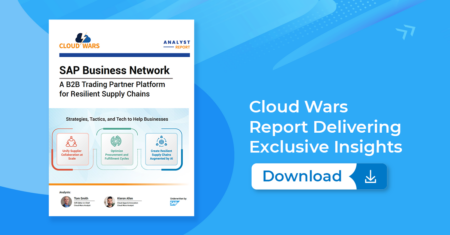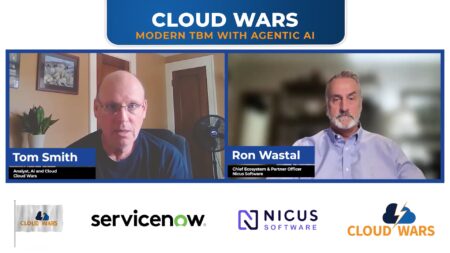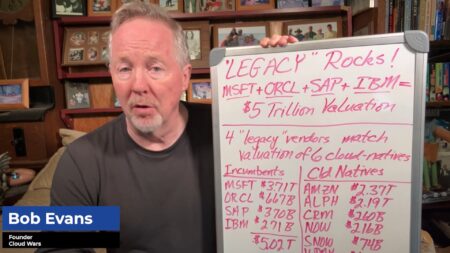The Acceleration Economy Analyst Network has been analyzing automation from a number of different angles: the underlying technology such as automation and software robots, vertical industry applications such as manufacturing and healthcare, and “horizontal” applications that operate across industries.
We’ve also placed a sharp focus on the promise of automation to streamline business functions, reduce or even eliminate redundant/repetitive tasks, and deliver strong returns on investment that some vendors assert will position their technology to be a “deflationary” force.
With all those factors swirling around — against the backdrop of steep inflation and cost pressures facing most industries — a group of us (Aaron Back, Kenny Mullican, Ronak Mathur, and me) got together for a timely discussion on automation.
Highlights
00:15 — Aaron Back sets the stage, explaining that the goal is to dive into the why and how of automation through the lens of industries. Companies are turning to tools like automation to really help employees focus on more meaningful work by taking out the mundane and repetitive work.
02:58 — In Paragon Films, the plastics manufacturing company where Kenny Mullican is CIO, robots can reach out, pick up rolls of film, and set them on a pallet, taking over some of the “heavy lifting.” But then there’s what’s often referred to as smart automation or hyper automation, and this is where you start to integrate automation with AI and machine learning for better manufacturing.
For example, you really don’t want employees who operate machinery focusing on a computer screen. Think about systems that have sensors or lasers or infrared to watch the quality of products as they’re being made. Then, automation can do something about it. Those systems can be watching for quality problems and automatically change some parameters of the manufacturing process in order to fix a problem as it’s happening.
05:49 — From his manufacturing experience, Aaron recalls labels getting put on incorrectly. Sensors could tell if the labels are placed incorrectly and kick something off the line. A lot of wasted products potentially could be sold. So, it’s interesting to see where it can have a reuse case; we can remove that label and kick it down to another line. The label can be taken off and it can come back through the line to be repackaged.
07:49 — Tom references three automation examples:
- Automation and bot software vendor UiPath is embedding automation robots into talent cloud software from iCIMS.
- Startup impress.ai is using bots to ensure that a company that gets a submission from a job candidate is being responsive and responding quickly.
- JBS Foods used automation technology in an SAP ERP migration, saving 30,000 man hours by automating a lot of the manual functions that otherwise would have been performed by highly paid software developers.
10:40 — Aaron asks Kenny if cost savings, improved productivity, or other benefits carry the most weight in his company and industry.
12:21 — Kenny notes the importance of cost savings anytime something can be automated. Additionally, there’s a big supply chain impact. Customers are already waiting an extended amount of time to get products today, so when a product that misses quality control goes out, or it’s the wrong product, then it’s going to start the whole supply chain all over again.
Another important area is HR. People may be worried about losing their jobs to automation, but there’s a lack of workforce availability already. Paragon Films keeps expanding manufacturing operations and creating new manufacturing lines, but the trick is staffing them. Anything that you can do with automation makes you more scalable and can improve your ability to sell more products.
14:34 — Automation is taking a “U-turn” in healthcare, Ronak says, focusing more on data migration than administrative tasks. Because healthcare uses so many legacy systems that have been built over the past 20 to 25 years, now is the time to migrate to new ERP systems. Automation is playing a key role in those migrations. Transferring to a new system requires time to actually build the new system. Automation can do that work for you.
16:47 — In the earlier days of Covid, distributing vaccines was one of the biggest hurdles for the entire healthcare industry worldwide. Ronak recounts that in Australia, there was a bot that was developed to help people with their journey from getting the vaccine to determining when to get the second dose and then boosters. This entire pipeline was automated with no human involvement, saving on costs and improving the patient experience.
19:50 — If there was a need to call you for your second vaccination dose, the system knows that you have been vaccinated already and that it’s time to call you after 45 to 60 days of time, or it would send an automated SMS. Companies like UiPath played a critical role.
21:03 — Aaron emphasizes the value — and benefit — of the patient experience that Ronak mentioned.
22:33 — Tom notes that automation can be “deflationary” by helping companies do more with less in a tight economy. Vendors are backing up their marketing messaging with really impressive outcomes.
23:48 — Ronak notes that automation is typically not a centralized function and raises the possibility that companies should name a Chief Automation Officer who can be the driver of automation strategies.
24:57 — Kenny says a manufacturing company doesn’t need to think narrowly about automation for manufacturing apps. Marketing automation is a great non-manufacturing example that Paragon Films implemented — probably more than any other automation in that company.
26:51 — Aaron follows up on the Chief Automation Officer discussion, noting data governance and data privacy are factors that could support centralized functions whereas we’ve always looked at it as applying automation to a specific department for their specific task needs.
For more exclusive coverage of innovative cloud companies, check out Cloud Wars Horizon here:









